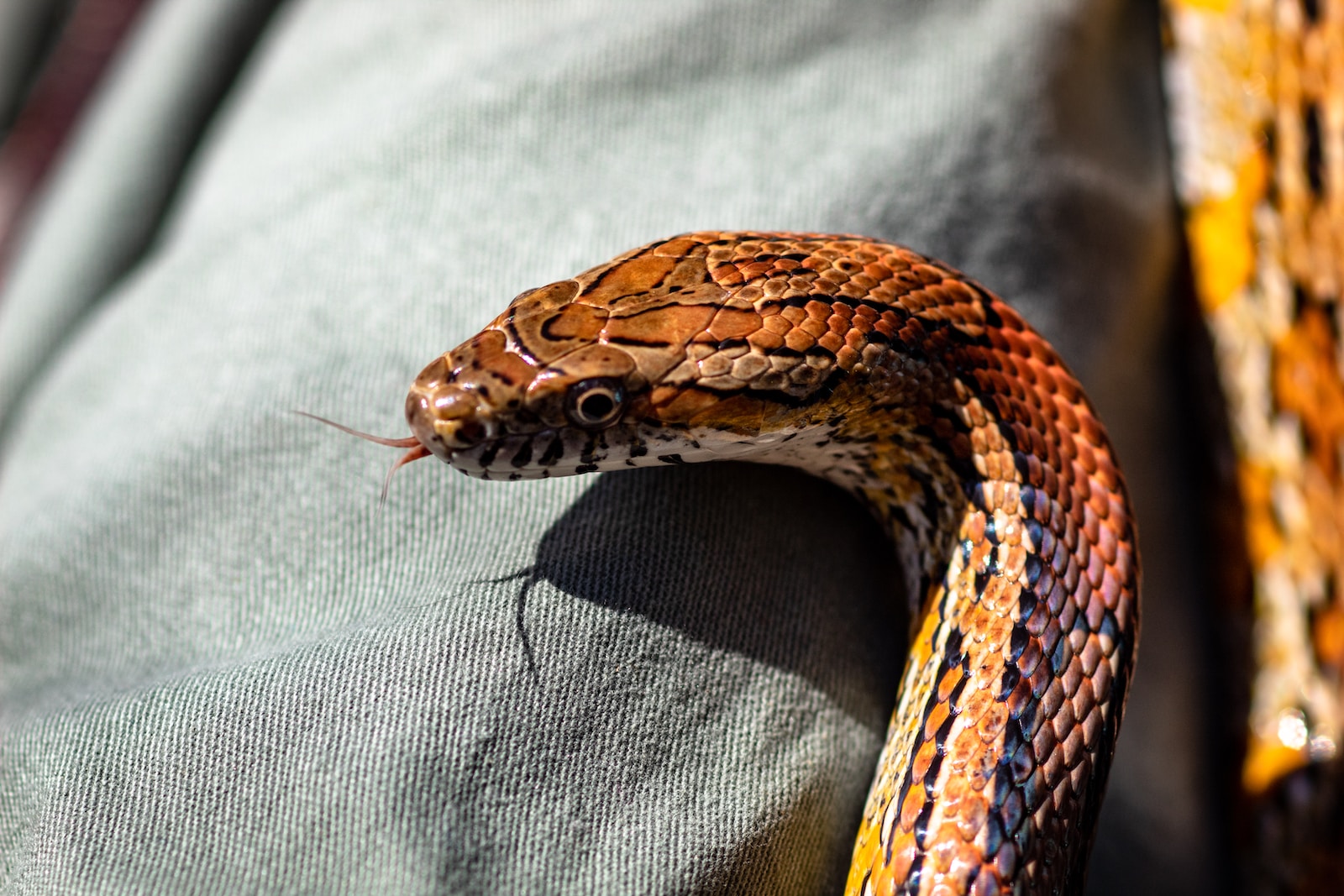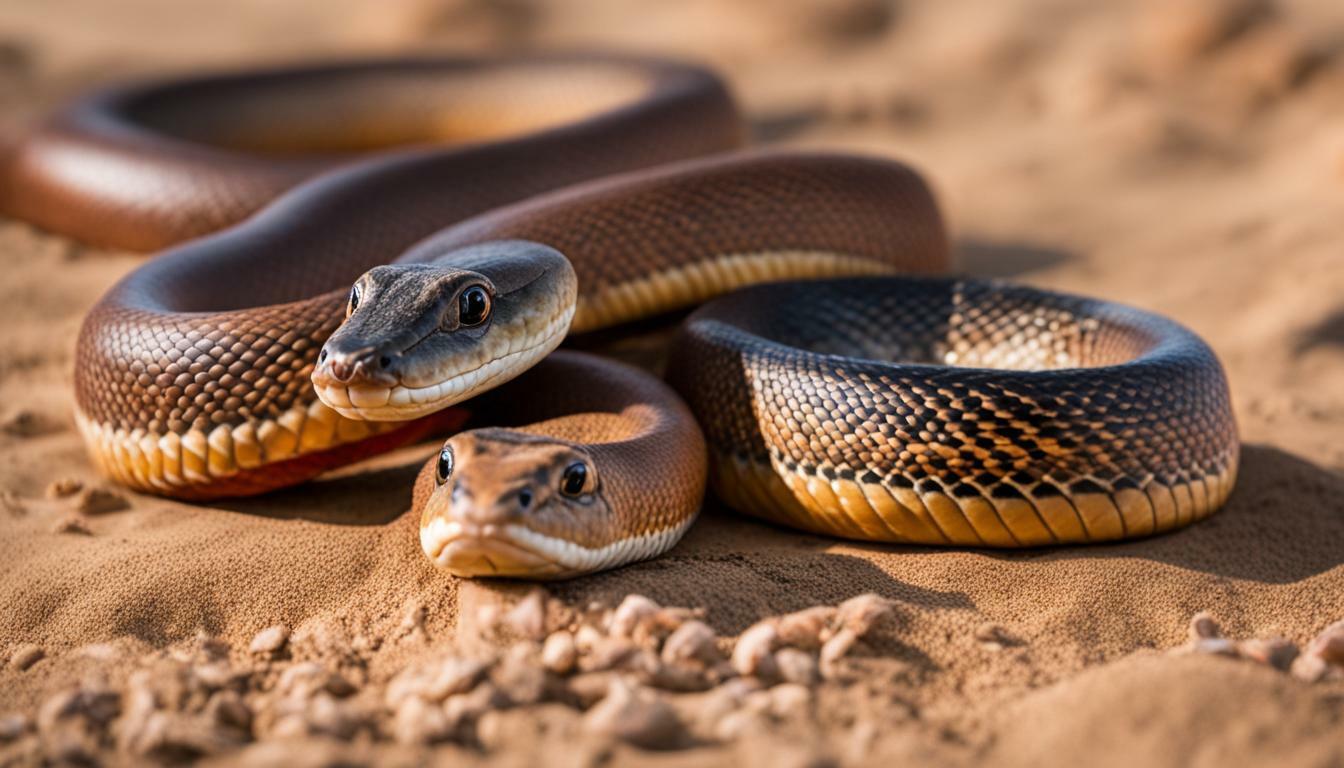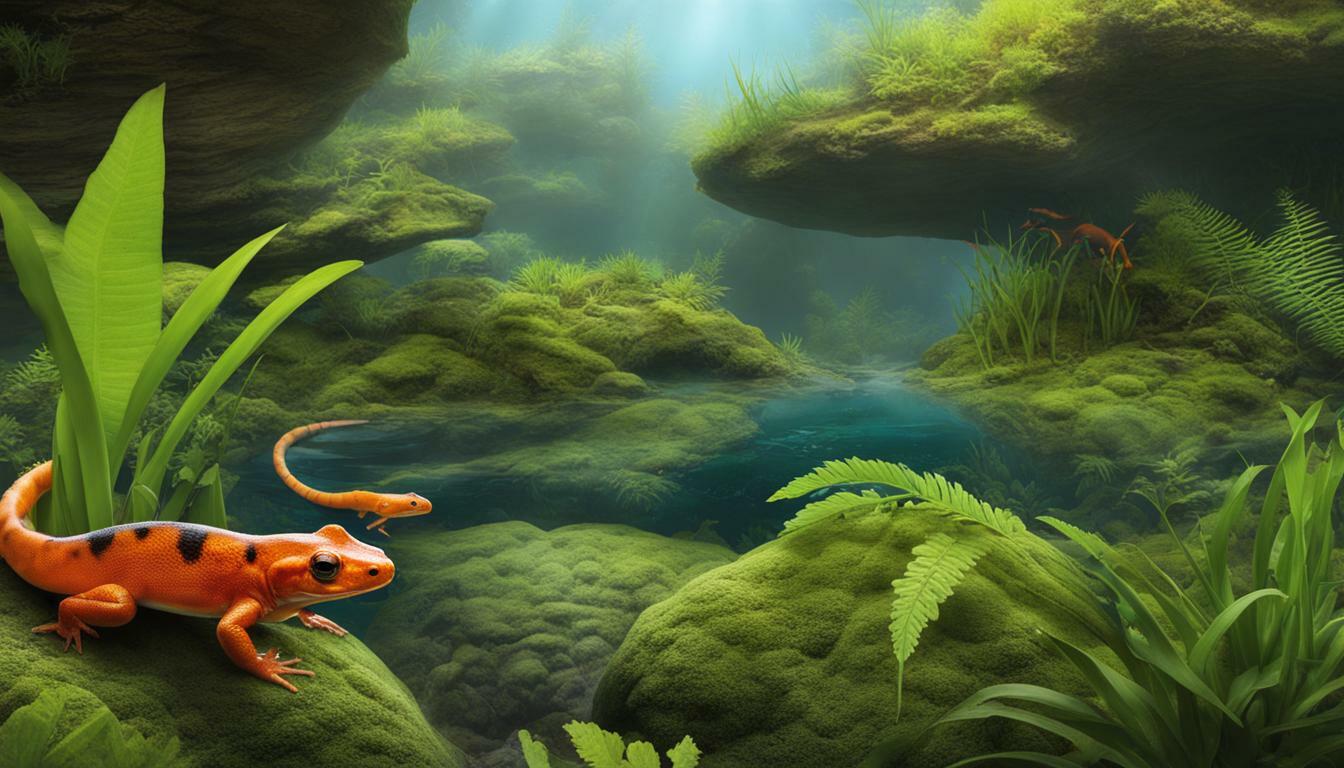For those interested in the fascinating world of snakes, Corn Snakes and King Snakes are two species that are often compared or confused with each other. While both species share certain characteristics, they have unique features that set them apart. In this article, we will explore the key differences between Corn Snakes and King Snakes.
Key Takeaways:
- Corn Snakes and King Snakes are two distinct species of snakes
- Both have unique physical features and behaviors
- Understanding their differences is crucial for their care and management
Corn Snake Characteristics
Corn Snakes, or Pantherophis guttatus, are highly popular non-venomous pet snakes that can grow up to 6 feet in length. They are known for their distinctive color patterns, which can range from bright reds to oranges, yellows, and browns, often resembling the color of maize.
One of the most notable characteristics of Corn Snakes is their smooth, shiny scales, which are arranged in rows along their bodies. These scales not only provide them with a stunning appearance but also help them move smoothly on different surfaces.
Another unique characteristic of Corn Snakes is their docile nature, making them ideal for beginners. Unlike other snake species, Corn Snakes rarely bite humans, and they are relatively easy to care for in captivity.
Corn Snake Species
There are several subspecies of Corn Snakes, including the Okeetee Corn Snake, the Palmetto Corn Snake, and the Miami Corn Snake. These subspecies differ in their color patterns and physical features, making each of them quite unique and fascinating.
| Subspecies | Appearance |
|---|---|
| Okeetee Corn Snake | White-bordered red saddle-like marks along their back with a white underbelly |
| Palmetto Corn Snake | Dark red blotches with black borders along their back with a pink or orange underbelly |
| Miami Corn Snake | Reddish-orange saddles outlined in black with a white underbelly |
Corn Snakes are active during the night and are excellent climbers, and they prefer habitats that allow them to hide, such as forests, fields, and barns.
Overall, Corn Snakes are a fascinating species with distinctive physical features and unique subspecies that are sure to impress any reptile enthusiast.
King Snake Characteristics:
King Snakes are a fascinating species of snake with a unique set of characteristics that help them thrive in their environments. These snakes are known for their striking coloration and patterns, which can vary depending on the species and subspecies.
One of the most notable characteristics of King Snakes is their size. They can grow anywhere from 3 to 6 feet in length, with some species reaching up to 7 feet. They are also known for their muscular bodies, which are designed for strength and agility.
There are several species and subspecies of King Snakes, including the California King Snake, the Eastern King Snake, and the Florida King Snake, just to name a few. Each of these snakes has its own unique set of physical attributes, such as different color variations and patterns.
King Snakes are also known for their docile nature, which makes them popular choices for pet owners and enthusiasts. They are not aggressive and will usually only bite when they feel threatened.
Another interesting characteristic of King Snakes is their diet. They are known for their ability to eat other snakes, including venomous species such as rattlesnakes. This is due to their immunity to venom, making them an important predator in many ecosystems.
In summary, King Snakes are a unique species of snake with a fascinating set of characteristics that help them thrive in their environments. Understanding their physical attributes and behaviors can help enthusiasts and pet owners provide the best care for these amazing reptiles.
Corn Snake Habitat and Behavior
Corn Snakes are commonly found in the southeastern United States, with their range extending from New Jersey to Florida and reaching as far west as Texas. They are known to inhabit a variety of environments, from forests and grasslands to abandoned buildings and homes.
These snakes are excellent climbers and can often be found in trees, as well as on the ground. They are active primarily at night, but will also come out during the day to bask in the sun or hunt for food.
Corn Snakes are carnivorous, and their diet consists mainly of rodents, birds, and other small animals. They are adept hunters, using their keen sense of smell and excellent eyesight to track their prey.
When threatened, Corn Snakes will often freeze in place or try to escape. If they feel cornered, they may vibrate their tails or strike to defend themselves.
During mating season, male Corn Snakes will search for a female mate and engage in a courtship ritual that includes rubbing against the female and flicking their tongues in her direction. Females will lay clutches of eggs, typically containing between 12 and 24 eggs, in hidden locations such as under rocks or in underground burrows.
Overall, Corn Snakes are adaptable creatures that can thrive in a variety of environments, making them a popular choice among reptile keepers and enthusiasts.
King Snake Habitat and Behavior
King Snakes are found in a variety of habitats throughout North and South America. They can be found in woodlands, deserts, grasslands, and even aquatic environments. Some species of King Snakes have adapted to living in a particular environment, such as the aquatic-loving Florida King Snake or the desert-dwelling Sonoran Desert King Snake.
These snakes are known for their hunting ability and will eat a variety of prey, including rodents, lizards, birds, and other snakes. They are not venomous and rely on constriction to kill their prey.
In terms of behavior, King Snakes are generally solitary creatures but may occasionally be seen interacting with others of their species during breeding season. They are active during the day and at night, depending on the species and the environment they inhabit.
Unlike some other snake species, King Snakes do not lay eggs. Instead, they give birth to live young, usually in the late summer or early fall. The number of offspring varies depending on the species and the size of the female.
Overall, King Snakes are adaptable, hardy, and fascinating creatures. Their diverse habitat preferences and hunting abilities make them a valuable part of many ecosystems.
Conclusion
In conclusion, understanding the difference between Corn Snakes and King Snakes is vital for reptile enthusiasts and keepers. In this article, we explored their unique characteristics, habitats, and behaviors. It is essential to note that both species have different diets, with Corn Snakes feeding primarily on rodents, whereas King Snakes have a more varied diet that includes other snakes, lizards, and rodents.
When it comes to care and diet, it is crucial to provide the appropriate food and environment for each species. Corn Snakes require rodents as their primary source of food, while King Snakes require a more diverse diet. It is advisable to research and seek guidance from experts to ensure that you are providing the correct nutrition for your snake.
Overall, Corn Snakes and King Snakes are fascinating creatures with distinctive characteristics, behaviors, and diet requirements. By understanding their differences, we can provide them with the best possible care and ensure they remain healthy and happy in their environments.
FAQ
Q: What is the difference between Corn Snakes and King Snakes?
A: Corn Snakes and King Snakes are two different species of snakes. While they may have some similarities, such as being non-venomous constrictor snakes, there are distinct differences in their physical characteristics, habitats, and behaviors.
Q: What are the characteristics of Corn Snakes?
A: Corn Snakes are medium-sized snakes that can grow up to 4-6 feet in length. They have a variety of color patterns, commonly featuring red, orange, and brown tones with black-bordered blotches. Corn Snakes are known for their docile nature and are popular pets among reptile enthusiasts.
Q: What are the characteristics of King Snakes?
A: King Snakes are slightly larger than Corn Snakes, reaching lengths of 4-6 feet. They have a pattern of bold black and white bands or rings, often resembling the pattern of a king’s robe, hence their name. King Snakes are known for their strong and musky odor, which they use to deter predators.
Q: Where do Corn Snakes live and what are their behaviors?
A: Corn Snakes are native to the southeastern United States and can be found in a variety of habitats, including forests, grasslands, and agricultural areas. They are primarily terrestrial, but are excellent climbers. Corn Snakes are nocturnal and feed on small rodents, birds, and eggs. They are also known for their ability to constrict their prey before consuming it.
Q: Where do King Snakes live and what are their behaviors?
A: King Snakes are found throughout North and Central America, inhabiting a wide range of environments such as woodlands, deserts, and even aquatic areas. They are skilled climbers and swimmers. King Snakes are opportunistic predators, feeding on a variety of prey including rodents, lizards, and other snakes. They are also known for their ability to eat venomous snakes, making them valuable in controlling snake populations.
Q: What is the conclusion about Corn Snakes and King Snakes?
A: In conclusion, Corn Snakes and King Snakes are two distinct species of snakes with unique characteristics, habitats, and behaviors. Understanding these differences can help reptile enthusiasts make informed decisions about their care and provide them with appropriate environments, diets, and handling techniques.
 Skip to main content
Skip to main content


